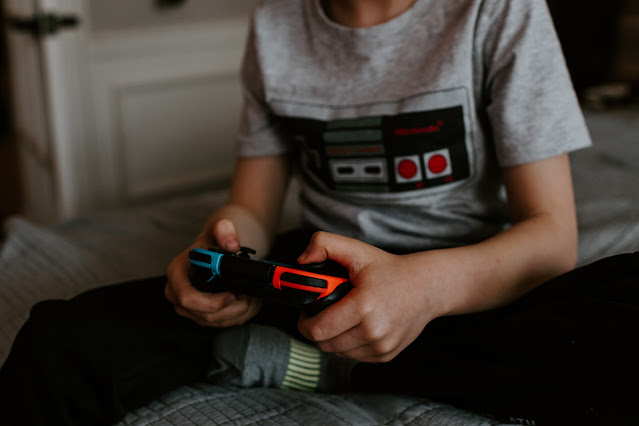Around the world, schools are expanding their reliance on technology for educational purposes. Teachers often use EdTech tools — educational apps and games, video conferencing, learning management systems, podcasts, and online discussion forums — which, when used correctly, can increase student participation, analytical thinking, and creativity.
Another type of educational technology involves educational video games, which are effective in helping teachers deliver core lessons as they grow their skills and knowledge. By gamifying education, learners take more active roles in the learning process. This method will make them realize that acquiring new information and mastering new crafts is as fun and exciting as playing online casino games, but without the risk of losing.
Some of the best educational video games are decades old, while others have been adapted from board games and other non-tech activities. They include:
The Oregon Trail
The Oregon Trail is one of the first educational computer games created. It was first released in 1974 and was designed to teach middle school children about the pioneer life of the 1800s. Over the years, there have been many versions for different devices. Still, all of the games, including the 2022 version that features 3D environments, cutting-edge visual effects, and pixel art characters, focus on a wagon leader who leads a party of settlers from Missouri to Willamette Valley in a convoy of covered wagons.
The original games were played on HP 2100 platforms and slowly evolved to Apple II, Atari, Commodore 64, Radio Shack TRS-80, DOS, and Windows. Today the game can be played on Nintendo Switch and online on Steam. The main idea of the game to have the player hunt, trade, ration food, and ford rivers while prioritizing the survival of the entire party is still the main focus of the game.
Reader Rabbit
Reader Rabbit was released in 1983 and remains a popular reading game for students young readers (a follow-up game, ClueFinders, was developed for older students). The series centers on Reader Rabbit and his friends, including Matilda the Mouse and Sam the Lion. Together the friends set out on adventure games where the student solves puzzles such as reading-based challenges and other subjects. The student navigates “travel” hot spots where they interact with an item, a song, a character, or a mini-game.
The games cover reading and phonics as well as math and memory. There are customization features that assess abilities, develop skills, provide assistance, adjust levels, and track progress.
Early versions of Reader Rabbit were played on Apple II, Atari, Commodore, DOS, and Macintosh. Today’s Reader Rabbits can be played on Windows 10, iOS, Android, Nintendo, and Apple TV.
MinecraftEDU
Minecraft is a sandbox game, a video game whose gameplay gives players the creativity to interact with a goal that they set for themselves or without any goal whatsoever. In a sandbox game, like with a physical sandbox, the player can create anything that s/he wants in it. In Minecraft, players explore a 3D world with virtually infinite terrain where they build structures, machines, and earthworks and discover and extract craft tools and raw materials. Players compete against or collaborate with other players. There are survival modes and creative modes along with user-generated content such as skins, texture packs, servers, custom maps, and modifications.
The MinecraftEDU platform specifically focuses on offering games that build STEM skills, engage students in problem-solving and collaboration and facilitate creativity through deep, meaningful learning projects. Students are presented with worlds that immerse them in compelling learning experiences so that they can set out on adventures through the landscape and solve puzzles while they build core skills. The tasks aim to help students consolidate knowledge, increase motivation and engagement and build confidence.
MinecraftEDU’s principles are based on the idea that learning experiences should relate to real life, learning is best accomplished when it’s within a meaningful context, and errors should be acknowledged to be a natural part of learning.
MinecraftEDU is available for Windows, Chromebook, Mac, and iPad.
Leapfrog LeapTV
Leapfrog Academy TV features a number of educational video games, including the Disney Frozen Arendelle's Winter Festival Educational, Ultimate Spider-Man Educational, Imagicard Paw Patrol Learning Game, Nickelodeon Dora, and Friends Educational. Kart Racing Supercharged! Educational and Disney Sofia The First Educational. All of these activities are aimed at preschoolers. They include puzzles, ebooks, videos, and other interactive media with the goal of creating personalized learning adventures for school-readiness skills in phonics, shapes, colors, writing, and numbers. The games challenge young learners to solve problems, color, learn from educational videos, think like a scientist, and more.
Each game in the series is set up to concentrate on a different subject area – for instance, the Frozen-themed LeapFrog game focuses on math skills and includes activities in addition, subtraction, shape recognition, number sequencing, and place value.
Users can play any of the Leapfrog Acadamy TV games on Windows® or macOS computers; and most Android or iOS tablets and phones with a Wi-Fi connection.
Food Force
Food Force directs users to consider one of the biggest challenges in the world today – how to get as much food to as many hungry people as possible and how to help the affected countries become self-sufficient. The game was launched in 2011 and is played entirely on Facebook as it delivers a real-world impact through virtual goods.
In the game, the player’s character, a rookie on a team of UN experts, travels to the fictional island of Sheylan along with a nutritionist, a pilot, a logistics officer, the director of food purchasing, and an appeals office. Participating gamers are challenged to locate hungry citizens, drop food supplies, coordinate supplies of donated and purchased food from around the world, produce balanced packs of rice, cooking oil, sugar, salt, and beans within a budget, lead a portion of food to convey to a depot and help a village invest in nutrition training, HIV/AIDS treatment, schooling, and food-for-work programs.
The gameplay is basically arcade-oriented, and all six missions can be played in under an hour.






![Baka Song Lyrics By Luffy [with ENGLISH TRANSLATION]](https://blogger.googleusercontent.com/img/b/R29vZ2xl/AVvXsEgOi-QHI7xHJiWDG4_24FnPLPXbUV2XviRZMrf1BdchtHrQN3qlcMRoObasvm6C_1GBnGsHdufK1C4RhTf2XOcZUqpenCdA5SXpw4moDAeOXTYCJkzP5dgQ8lnuf7gz1XR1ZPvkJURSc1sp/s72-c/luffy+baka+song+lyrics+english.jpg)




No comments:
Post a Comment